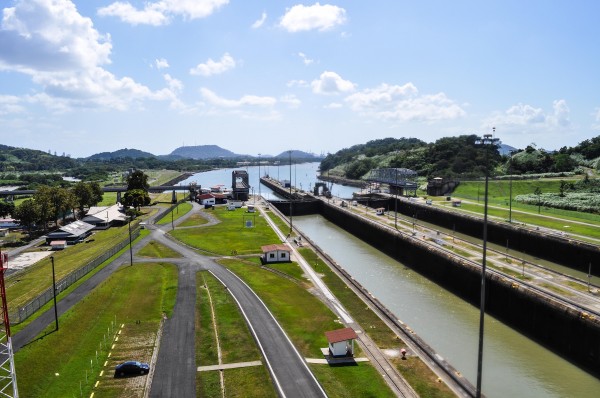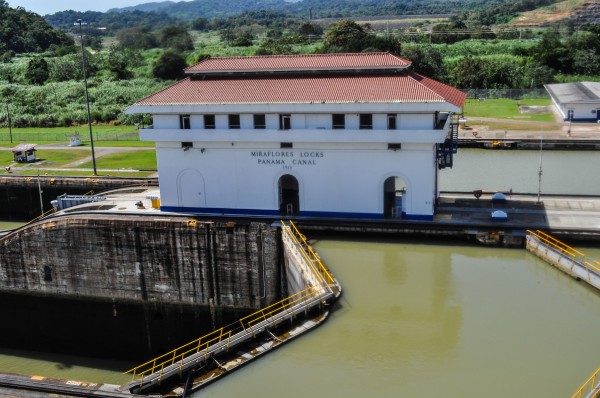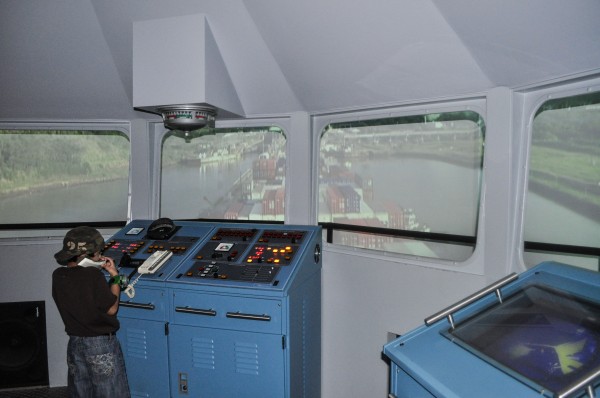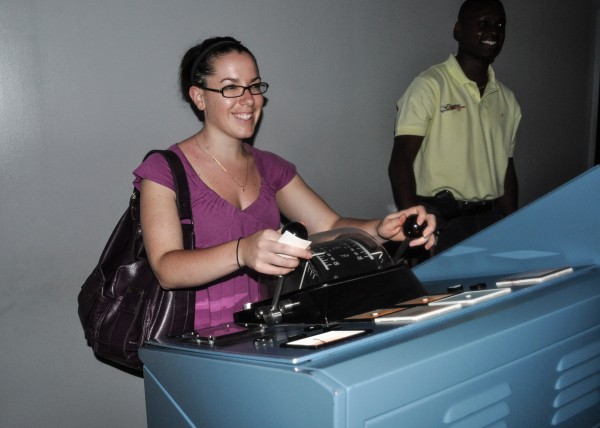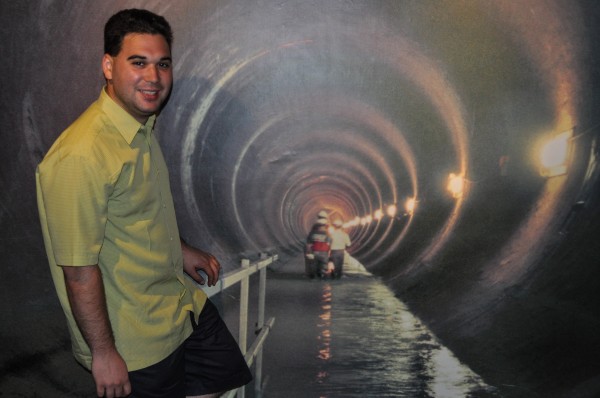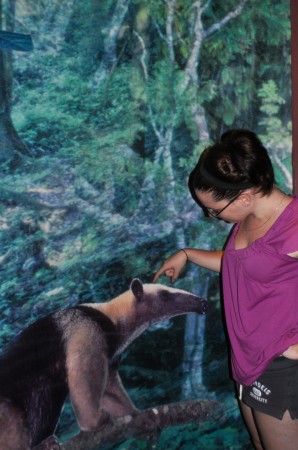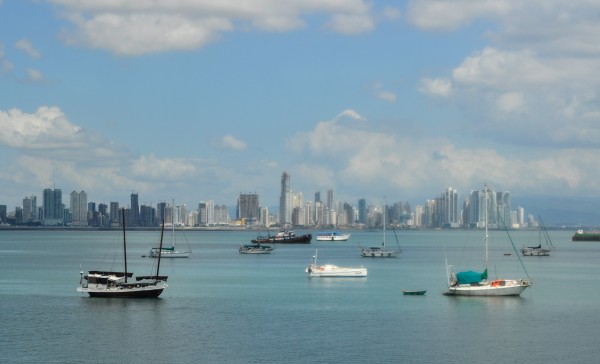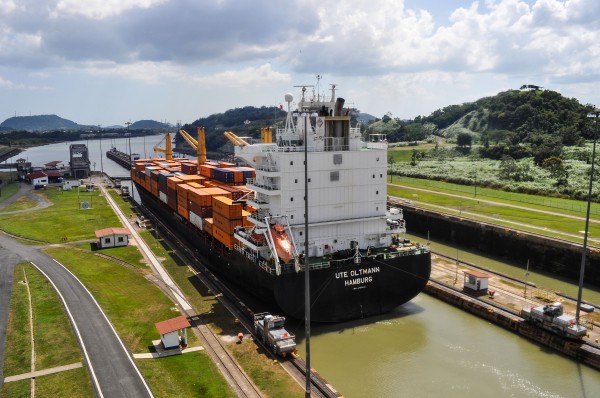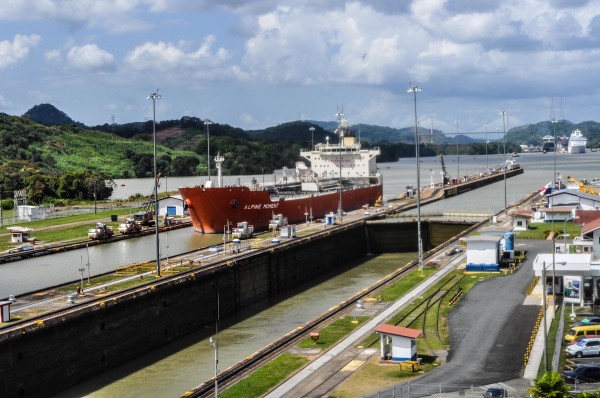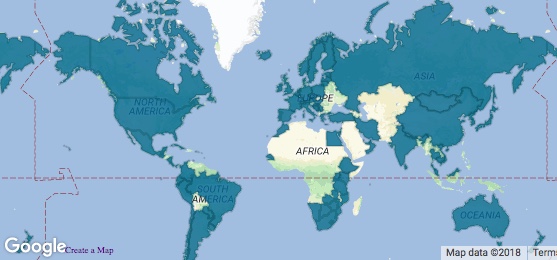On a recent trip to Peru, Chandra and I tried our hardest to find a direct flight back to New York but just couldn’t make it work. We ended up booked on Copa Airlines with a five hour layover in Panama City. You know we weren’t about to spend those five hours in the airport. As masters of maximizing our time when traveling, this seemed like the perfect opportunity to visit Panama Canal from airport and get to see one of the world’s engineering marvels!
With only five hours on the ground, things would need to be well orchestrated. We couldn’t be futzing around with public transport and making our way through a country we’ve never been to before. We were able to arrange a three hour tour of the canal and city with Panama Travel Corp. They don’t list the three hour tour on their website, but you can see an example of one here. The tour costs about $100 total for two people. After landing in Panama City, we were greeted by our guide Stanley from Panama Travel Corp at arrivals. Minutes later, we were in a van heading towards the Panama Canal leaving our luggage at the airport where it was checked through to our next flight.
The Miraflores Locks visitor center at the Panama Canal is located 35km (22 miles) from Tocumen International Airport. Without actually passing through the canal on a ship, it’s very difficult to understand the size and scope of this engineering feet. For this reason, the tour begins in the museum at the visitor center. The museum walks you through the process of why and how the canal was built. It covers the challenges that were overcome and gives a sense of the enormity of the task. Just being told that the canal is 77km (48 miles) long doesn’t really mean much. But when you learn that it takes a ship roughly eight hours to traverse it, you start to realize the magnitude of what’s happening in this place.
The museum can be a bit silly at times, but it helps if you have someone who knows what they’re talking about bringing you through. Not all the exhibits are self explanatory and may appear to be more child-friendly than adult. Our guide was no stranger to this museum. Not only is he in the museum every day with tourists, but his Grandfather was actually a slave that was brought over from the Caribbean to help build the canal so he has a real story to tell that gives further context to the Canal itself.
Besides being knowledgeable on how the canal was built, Stanley also had a great sense of humor. He insisted we take some silly photos in the museum and would have us take the photo again and again until he proclaimed it “perfect”.
As you move through the museum you go up four floors until you are finally on the roof overlooking the canal itself. By the time we got to this point, there was no ship in the canal which kind of deflates the magnitude of seeing the canal in person. On this particular day, 35 ships were scheduled to pass through the canal and the next one wasn’t for about 45 minutes. To make the most of our time, we left the canal and headed to get some lunch about 15 minutes away. After a quick bite we had a chance to learn about the US Military presence that used to be in Panama and see where the barracks still stand as well as the artificial islands they built using the earth removed to build the canal. I had always known that the US Military built the canal but seeing these sites in person really demonstrates the huge impact the US has had on Panama as a whole.
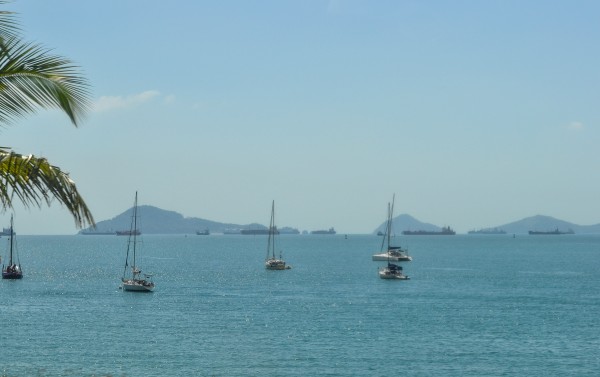
Those islands in the distance aren’t natural. They were created with the earth removed from the Canal.
Unfortunately, we didn’t get to see much of Panama City itself because of the awkward schedule of crossings through the canal. If things had lined up better, we would have gotten to go into the city a bit. From a distance Panama City looks kind of like Miami. It would have been fun to explore.
Back at Miraflores, we arrived just in time to see a massive German container ship passing through the locks with another one right behind. It’s incredible to think about these massive ships traversing oceans and then passing through this narrow canal in order to cut weeks off their trip. Of course, this shortcut isn’t cheap! All ships passing through the canal must pay a toll which is calculated based on the size and type of ship as well as number of passengers. Small boats may pay only $1,500 to make the crossing, but large cruise ships pay based on the number of berths on board – occupied or not. The per-berth charge is currently $92 for unoccupied berths and $115 for occupied berths. This means a large cruise ship may be paying over $200,000 to make the crossing! Since the US handed over control of the Panama Canal to Panama in 1977, these tolls generate a substantial income to the Panamanian economy.
There’s no doubt the Panama Canal plays a major role in global commerce and transportation. We were surprised also to learn of the role that it plays in ship building. 100 years ago, ships were smaller and I’m sure the canal seemed large enough. Now, the physical width of the canal at it’s narrowest points sets a standard for ship building called “Panamax“. Ship builders need to keep these restrictions in mind if they ever intend for the ships they build to have to traverse the canal. Build too big and you’ll have to go the long way around! Panama is, however, in the process of widening the canal thereby increasing the Panamax standards. And yes, in the Middle East you’ll also run into another ship building constraint – “Suezmax“.
A visit to the Panama Canal during a layover in Panama City is definitely doable if you have at least five hours on the ground. Don’t miss an opportunity to see this amazing accomplishment of mankind!

